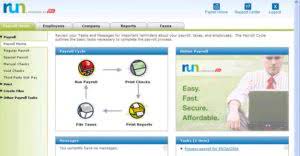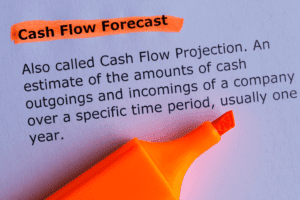Inventory count determines both inventory shortages and the amount of inventory on hand at any time. In accounting, a business must establish the cost basis of this inventory. Cost accounting is a more conservative inventory valuation method that values inventory based on its cost.
Get Weekly 5-Minute Business Advice
- Your inventory value would then be $180 since you have five basketballs left purchased for $6 each and 30 left for $5 each.
- Retailers should check their inventory regularly to make sure their numbers are right.
- Cost accounting for retail tracks each item based on the total cost paid for purchased inventory.
- Keeping accurate inventory records will also help save time while preparing your tax statements.
If you sold 120 of them, the cost of goods sold was $24, and you have $16 for the ending inventory. A retail business owner has to understand that the numbers these methods provide will not be as accurate as a physical inventory count, but they will save time. Whether the business is using LIFO, FIFO, or weighted average, each inventory costing method produces different results with various benefits. The biggest advantage of using retail accounting for retail stores is that it solves the problem of having to complete a physical inventory count. Retail accounting is a specific method of accounting that assists companies in tracking inventory without manually counting all of the items in the store or warehouse. You can find out more about the process of accounting for your retail business – including income statements, balance sheets and cash flow – in our complete Guide to Retail Accounting.
Maintain Accurate Records:
This method tracks the individual cost of each item in your inventory, making it ideal for high-value goods like jewelry or electronics. However, it requires detailed record-keeping and can be time-consuming for businesses with a retail accounting vs cost accounting large volume of inventory. Even if the rigidity of financial accounting creates some inherent disadvantages, it does remove the uncertainty and misapplication of accounting guidelines of cost accounting. This means additional—and often more vigorous—reconciliation to verify accuracy. Overheads are costs that relate to ongoing business expenses that are not directly attributed to creating products or services. Retail businesses have unique challenges, not the least of which is business accounting — especially for inventory.
What Is Retail Accounting? A Guide to the Retail Method of Accounting
Retailers often use the retail inventory method to value inventory. In most retail businesses, you can see a clear pattern between the cost of products and their retail price. This enables retailers to convert retail prices to cost for inventory valuation purposes. To calculate the final cost of the inventory using this method, calculate the cost-to-retail ratio for a specific year and multiply the ending inventory retail value by this ratio.
How to Get Rid of Average Costing in QuickBooks Reports
When the item is sold and you scan its barcode, the numbers in your inventory will update automatically. Keeping accurate inventory records will also help save time while preparing your tax statements. The objective is to maximize profitability; achieving that goal depends greatly on managing costs. Fixed costs are the costs that keep a company running and don’t fluctuate with sales and production volumes.
Real-Time Inventory Data, Inventory Accounting and Supply chain – The triad
The cost accounting method, which assesses a company’s production costs, comes in a few broad styles and cost allocation practices. No matter your industry, cost accounting is essential for your internal team. It will help you record and analyze the costs of products in services so that you can operate smoothly and grow your business. If you don’t have the time or expertise to handle your accounting manually, get the help you need with one of the best accounting platforms. Let’s assume you took a physical inventory count at the beginning of the quarter, and you know the actual cost of your inventory as of that date was $80,000. Reviewing the reports from your point of sale system you see that, as of the end of the quarter, your sales totaled $30,000.
- Efficient tax management is imperative for retail businesses to meet their tax obligations and optimize tax liabilities.
- Using weighted averages to find the inventory value is helpful to stores that sell a variety of items at different prices.
- QuickBooks is one of the most popular accounting software programs on the market and while it is one of the best options, it’s not necessarily the best for every business.
- A direct cost is a cost directly tied to a product’s production and typically includes direct materials, labor, and distribution costs.
- It’s a simple approach that often reflects the actual flow of inventory in retail stores.
- Many, or all, of the products featured on this page are from our advertising partners who compensate us when you take certain actions on our website or click to take an action on their website.
- Whether you leverage retail accounting software or maintain manual records, analyzing trends and studying your data empowers you to make informed business decisions.
- Synder provides you with the tools to manage your own accounting and helps simplify the entire retail accounting process.
- Of all the inventory costing methods, LIFO is beneficial if the front of the store or the first products on shelves holds the most recently purchased inventory.
- Our editorial team independently evaluates and recommends products and services based on their research and expertise.
- It uses a set markup to figure out the value of items sold and the cost of goods sold (COGS).
You know you sold 50 dice, so you match the number of items sold to the average cost of 7 cents, which is a total of $3.50 for the cost of goods sold and $1.40 for ending inventory. You bought 30 dice at 5 cents apiece, then purchased a second order of 25 dice at 7 cents each and a last order of 15 dice at 10 cents each. Only 20 are left at the time you track your inventory, and you’re not sure what cost to assign to the 50 dice you’ve sold. Below are some methods of calculating the cost of inventory that are valuable for retail accounting.
Retail accounting tracks your inventory costs based on the price you sell bookkeeping each item. Cost accounting tracks your inventory costs based on the amount you paid to acquire each item. First, retail accounting helps businesses determine the cost-to-retail ratio. This is perhaps the easiest method of tracking the number of items in your inventory accurately.






